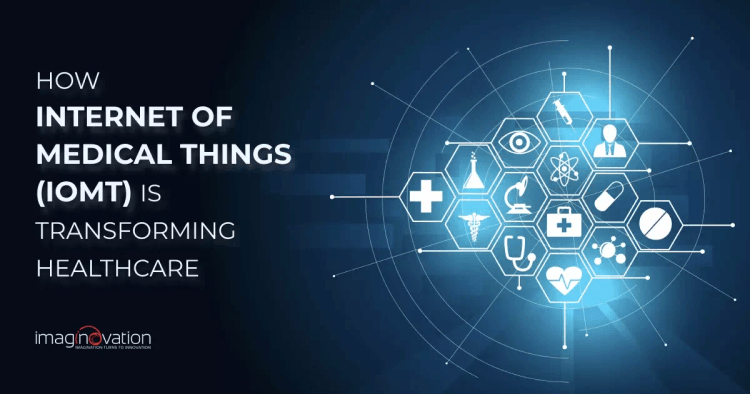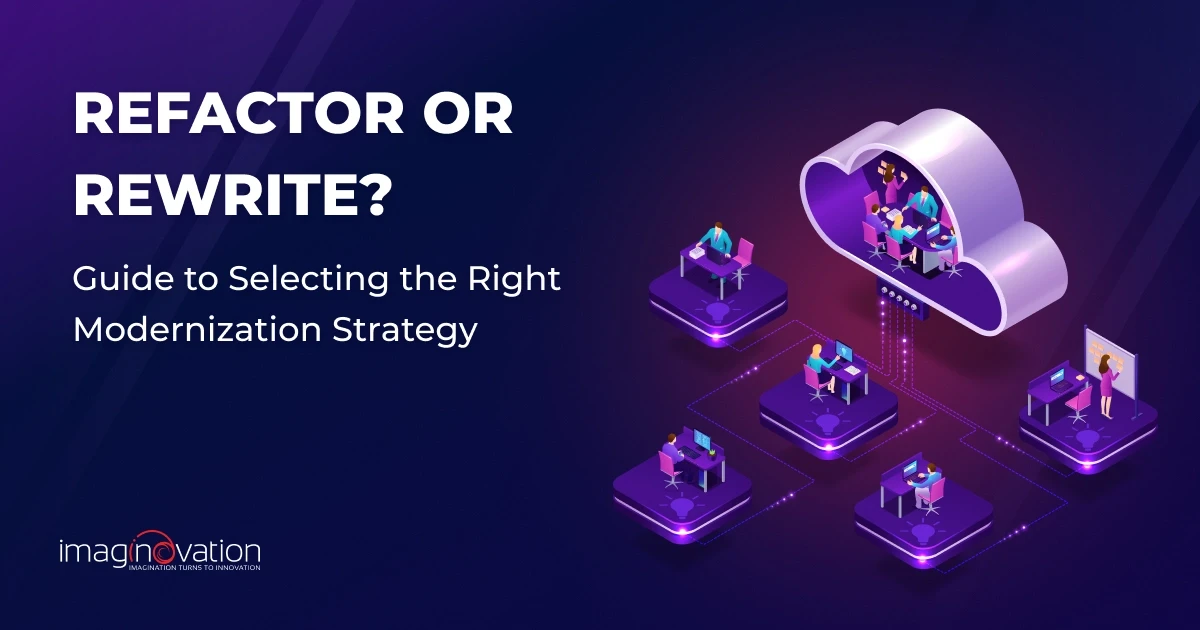Healthcare has entered the digital era. As a result, the way medicine is practiced is changing.
From smart inhalers for asthma patients to smart pills, mood-aware IoT devices to smart contact lenses and wearable heart rate monitors to robotic surgeries, the use of IoMT solutions and connected devices in healthcare has hugely increased.
Cisco estimates that 50 billion-plus devices will be connected to the Internet globally in the next five to six years. Around 30 percent of these connected devices will be deployed in medicine.
Let us check how the Internet of Medical Things (IoMT) is transforming the healthcare industry.
What is IoMT?
The Internet of Medical Things (IoMT) or Healthcare IoT is a network of Internet-connected medical devices, hardware infrastructure, software applications, and other tech solutions used in healthcare.
It is one of the most exciting innovations in the healthcare sector, driven by internet-connected devices and cloud storage.
Based on an idea of the amalgamation of IoT software development and medical devices, IoMT helps doctors and medical practitioners stay connected to their patients.
The global IoMT market size stood at 41.17 billion USD in 2020. By 2028 the worldwide IoMT market is expected to reach 187.60 billion USD, with a CAGR of 29.5 percent.
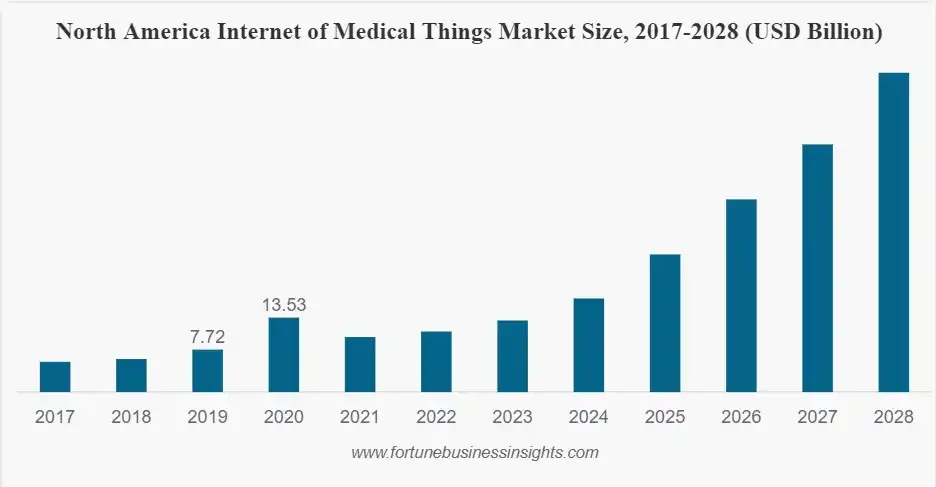
Difference Between IoT and IoMT
The IoT or Internet of Things is a collection of various types of devices, all assimilating and sharing data through the Internet.
It is made up of a variety of items. For example, smart light switches, smart watches, smart refrigerators, smart televisions, smart fire alarms, smart door locks, smart bicycles, and smart security systems - are just a few Internet of Things (IoT) products.
These IoT devices support the expansion of internet connectivity and usage beyond standard devices like laptops, desktops, tablets, smartphones, etc.
Another exciting thing about IoT is that it allows, through the Internet connection, all these devices a level of autonomous “smartness” that is otherwise difficult to achieve.
This autonomous smartness enables them to process information intelligently and interact with other devices without manual intervention.
The simplest example of using the IoT is switching on a lightbulb with your smartphone app. Another example related to public infrastructure can be a web-connected streetlight controlled remotely.
Another area where IoT and IoMT differs is in their use. Most IoT-enabled devices are meant for the average consumer or layman.
Without a doubt, IoT tech is beneficial for many other sectors like construction, logistics, medicine, etc.
The Internet of Medical Things (IoMT) involves connected devices used within the health care industry.
IoMT differs from general IoT not just in terms of where it is used but also in terms of its design. IoT devices are more consumer-focused, offering maximum convenience and usability. On the other hand, IoMT devices are focused more on accuracy, reliability, and security.
Moreover, IoMT devices are very useful in hospitals, where doctors and nurses are constantly on the move. But, they must continue to check on their patients throughout the day.
With IoMT devices and sensors, the medical staff can receive essential information they need from anywhere in the hospital. This would free up much of their time to perform other life-saving activities.
How IoMT is Changing The Healthcare and Medical Industry
Whether it is chronic disease management, personal fitness monitoring, or general preventive care, the integration of IoT in the healthcare domain has significantly impacted the sector. Industry experts call IoMTs a game-changer because they can lower healthcare costs, improve efficiency, and boost quality patient care.
Let’s discuss how IoMT is transforming the healthcare and medical industry.
1. Quality Patient Care
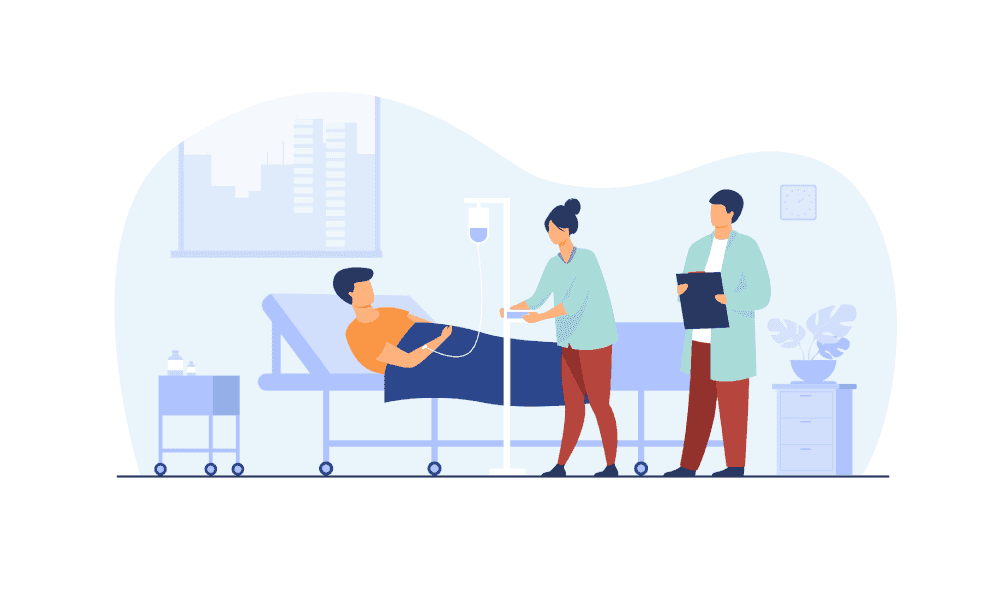
Better patient care means better treatment results. IoMT is turning out to be extremely useful in this area. Here's how it is done.
- Many more data sources. Connected technologies such as IoMT provide previously unexplored, additional sources of patient data. For example, smart pills (digestible pills with nanosensors) transmit vital health data and report if and when patients take their medicines.
- Benefits of early intervention. IoMT devices, such as wearables for remote patient monitoring (RPM), can alert doctors about symptom changes far before something minor becomes a severe problem requiring hospitalization. This is especially crucial for chronic diseases like diabetes or heart disease that require regular symptom monitoring.
- Accurate diagnoses. Besides providing new data, IoMT collates and analyzes data from various sources. This gives medical practitioners insight into patient health, facilitating them to make informed decisions about patient diagnosis and prescribing treatment.
- Enhanced patient adherence and engagement. Medicine reminder solutions motivate patients to become regular in taking medication. Besides, wearable devices like smartwatches and belts facilitate patients to self-monitor their vitals and educate them about symptoms and conditions.
2. Bring Down The Burden On Healthcare Practitioners
IoMT offers the best solution to fight the burnout experienced by medical practitioners, and here's how this is done:
- Fewer in-person visits. Remote patient monitoring via IoMT reduces the number of patient clinic visits.
- Better access to important info. A busy doctor can immediately check more patient records that are accurately collected via IoMT on their laptop/tablet.
- Less scope for errors. IoMT solutions hugely improve data analysis; combined with AI tools, you get an app that ensures no critical information is overlooked.
3. Reduce Per-patient Expenditure
A Deloitte study estimates that by 2040, US spending on healthcare is expected to reach 8.3 trillion USD.
With medical IoT (IoMT) solutions, we can bring down this figure, and here's how:
- RPM - Remote patient monitoring. Medical practitioners can now monitor them at home rather than invest their valuable time meeting noncritical hospital patients. IoMT devices will, in this case, send real-time data about their symptoms. This hugely decreases the number of patient clinic visits. Therefore, using machine-based intelligence, sensors, and automation, IoMT reduces the dependency on humans during routine healthcare check-ups and procedures.
- It has improved operational efficiency. IoMT real-time tracking of a hospital’s infrastructure, including equipment and staff. This is very helpful in optimizing workflow and supply management, thereby reducing waste and allocating resources to functions that need them the most. For example, with smart beds, which can sense the patient's presence functions and automatically adjust the bed to the correct angle, you don't need a nurse to intervene and support the patient.
4. Better Patient Experience
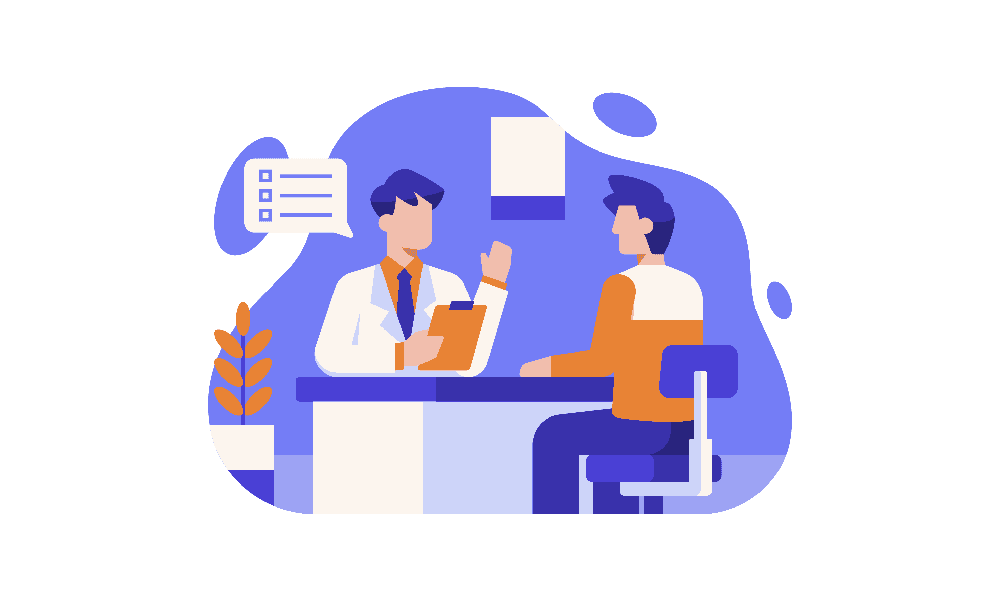
With healthcare shifting its focus towards value-based care, the patient experience becomes essential. The IoMT devices and solutions improve patient outcomes, reduce patient visits, and facilitate better and faster communication between doctors and patients.
- On-demand healthcare. IoMT solutions allow patients to access quality care when needed, regardless of their location or ability to travel.
- Convenience and ease of use. IoMT devices are easy for patients to send vital data quickly. In addition, they can help patients better understand their disease and symptoms via built-in AI tools such as chatbots.
5. Community IoMT
Community IoMT is excellent at facilitating remote services. For example, healthcare providers have started using point-of-care devices in non-traditional medical settings like field hospitals or kiosks to dispense medicines to people in areas with limited or no access to traditional infrastructure.
Medical suppliers happily use IoMT devices in logistics to track the transport of healthcare goods or medical equipment. IoMT sensors in logistics monitor temperature or pressure-sensitive shipping containers to ensure quality throughout the shipping process.
Challenges of IoMT Integration in Healthcare
The exponential growth of IoMT in the last few years shows that healthcare businesses find this technology beneficial. But no innovation is without its share of challenges and possible threats.
Let us review the most critical challenges that must be addressed before IoMT is implemented.
Data Privacy and Security
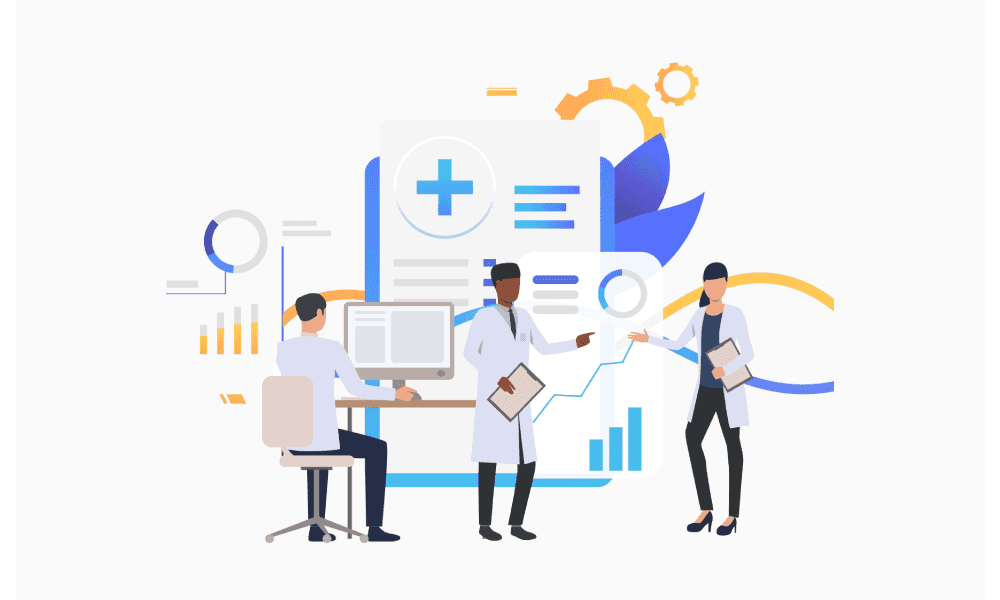
Data privacy and security is one of the most critical IoT challenges for the medical industry. Let me tell you why so.
- IoMT applications and devices are expected to deal with a large volume of personal and financial data such as DoB, social security number, bank account details, genetics, etc.
- Since IoMT devices are connected anytime, anywhere, they are susceptible to hacking and illicit access.
- IoT solutions generally lack sufficient computing power to implement relevant security layers.
Interoperability
Interoperability is the ability of more than one device, system, or network to communicate heterogeneously and exchange information. It is a big concern because:
- When interoperating, IoMT devices cannot always ensure patient data is transmitted, received, and stored without any errors and delays.
- The different healthcare functions often run in silos and may not communicate efficiently with each other.
- Moreover, when integrating newer IoMT systems, crucial devices may face interoperability issues.
Device Mobility
Stationary devices have limited performance. But integrating IoMT devices into the medical industry can be challenging for mobile devices because:
- Limited network capacity and physical barriers during movements interrupt a wireless signal.
Licensing and Regulations
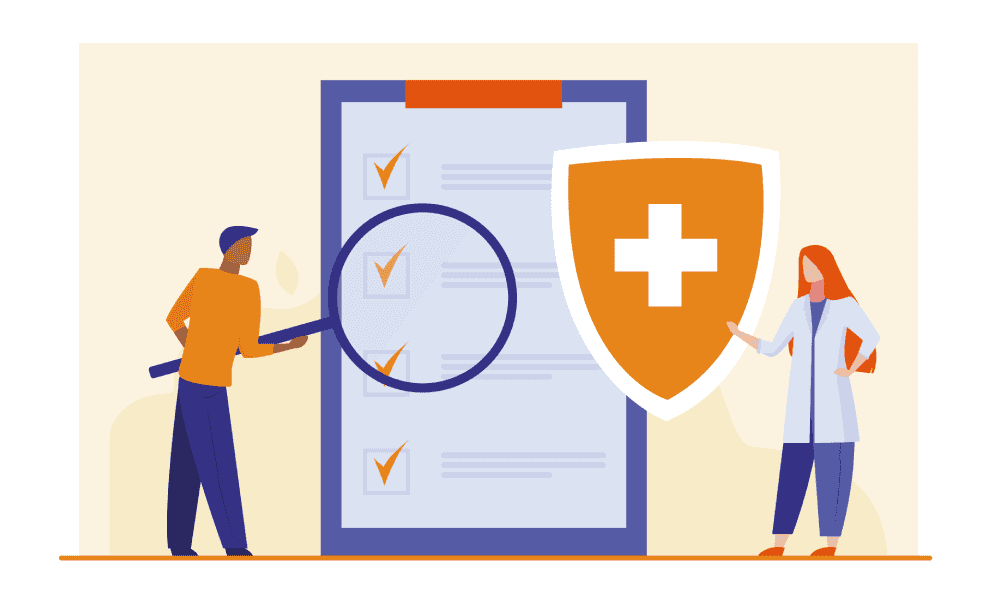
Adherence to medical IoT devices to compliance regulations and securing licenses is mandatory.
However, not many businesses can take sufficient steps toward it, leading to increased risks and legal costs in the future.
This is especially important for HIPAA regulations, to which all the new and innovative technologies should comply.
5 Examples of IoMT Used in Healthcare
IoT devices present many new opportunities to the healthcare sector to monitor patients and self-monitor themselves.
Let’s take a few examples of IoMT used in healthcare.
1. RPM - Remote Patient Monitoring
Remote patient monitoring is the most typical but essential use of IoT devices in healthcare. IoT devices can automatically gather health metrics such as heart rate or blood pressure from patients who are not physically present in a healthcare facility, thus, eliminating the need for patients to visit the doctor in person.
Algorithms are used over this data to analyze it for recommending treatments or generating alerts if the IoMT sensors detect some abnormality.
A glucometer is an RPM device that tests the blood sugar level of type 1 and type two diabetes patients with a small drop of blood.
A pulse oximeter is another example of RPM that monitors blood oxygen levels for patients.
Timedoc Health is a Chicago based that offers RMP devices.
2. Hospital Infrastructure Management
These devices are beneficial. They can track and notify the hospital about the exact location of medical devices across the hospital and warn them when essential supplies are running low.
On top of that, IoMT hospital infrastructure management can monitor air contamination in the facility, the consumption of electricity and other resources, and alert about any unauthorized access.
Link Labs offers AirFinder, which is a real-time location system (RTLS)
3. Vital Tracking Wearable
These are wireless devices that help you monitor your body's vital signs.
For example, they record an electrocardiogram, heart rate, blood pressure, respiratory rate, blood oxygen saturation, and body temperature.
Many such devices are wearables. They collect data that can be shared with the healthcare provider to take action if necessary.
Cardiac RPM, a hypertension management solution by Vector, is one such solution.
4. Connected Contact Lenses
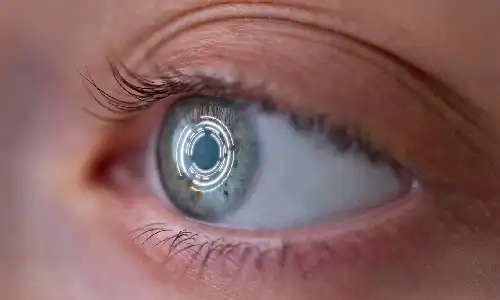
Smart contact lenses offer the opportunity to collect healthcare data utterly non-intrusive way. In addition, by adding micro-cameras, they allow wearers to take pictures with their eyes.
Whether used to improve health outcomes or other purposes, smart lenses promise to turn human eyes into a powerful tool for digital interactions.
MojoVision provides an excellent solution for connected contact lenses.
Augmedix is another innovative startup that reinvented the way Google Glass is used. The company helps doctors wearing smart glasses better connect with their patients by changing how documentation and administrative tasks are completed.
5. Sleep Tracking Device
Sleep disorders are common these days. Therefore, monitoring sleeping patterns is essential for treating and diagnosing such diseases.
IoMT devices that monitor sleep quality are a significant breakthrough in this domain. They motivate users and also recommend how to improve the result.
Soltec Sleep Management solution is an IoMT solution for tracking sleep patterns.
Create Powerful IoMT Applications with Imaginovation
IoMT and healthcare are, in a way, the two sides of the same coin. We at Imaginovation offer to build a connected infrastructure of devices for you - on which the health providers and patients can rely.
If you wish to build a custom IoMT software or app, contact us at Imaginovation.
Imaginovation is an award-winning web and mobile app development company with vast experience crafting remarkable digital success stories for diverse companies.
Let's talk.
Ready to build an app, but not sure where to start?
We've got you covered. Click the button below to get started.

